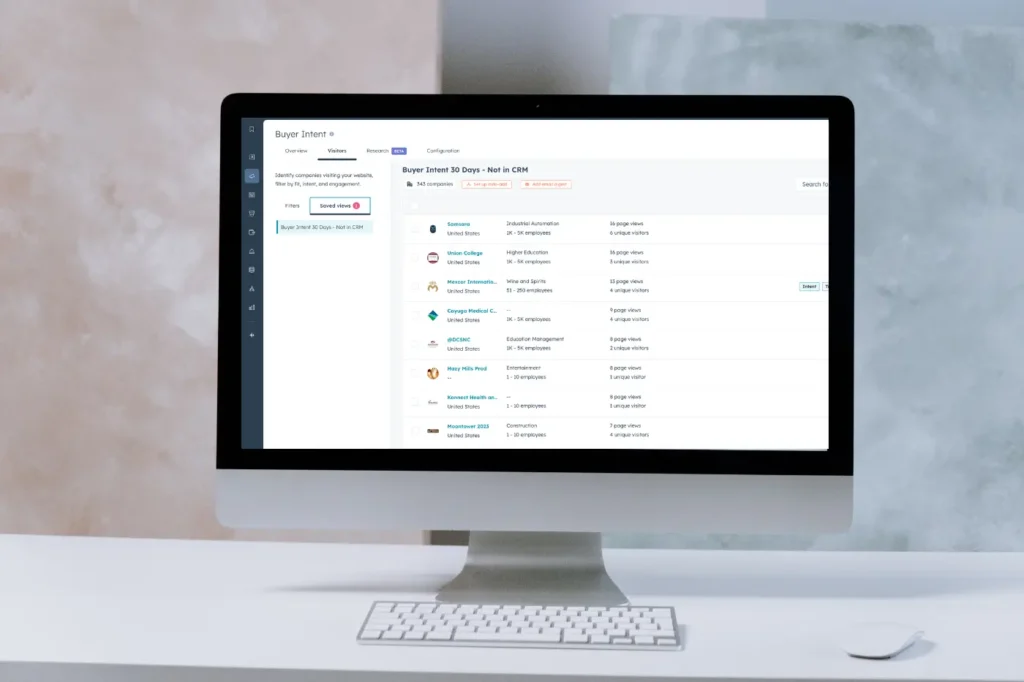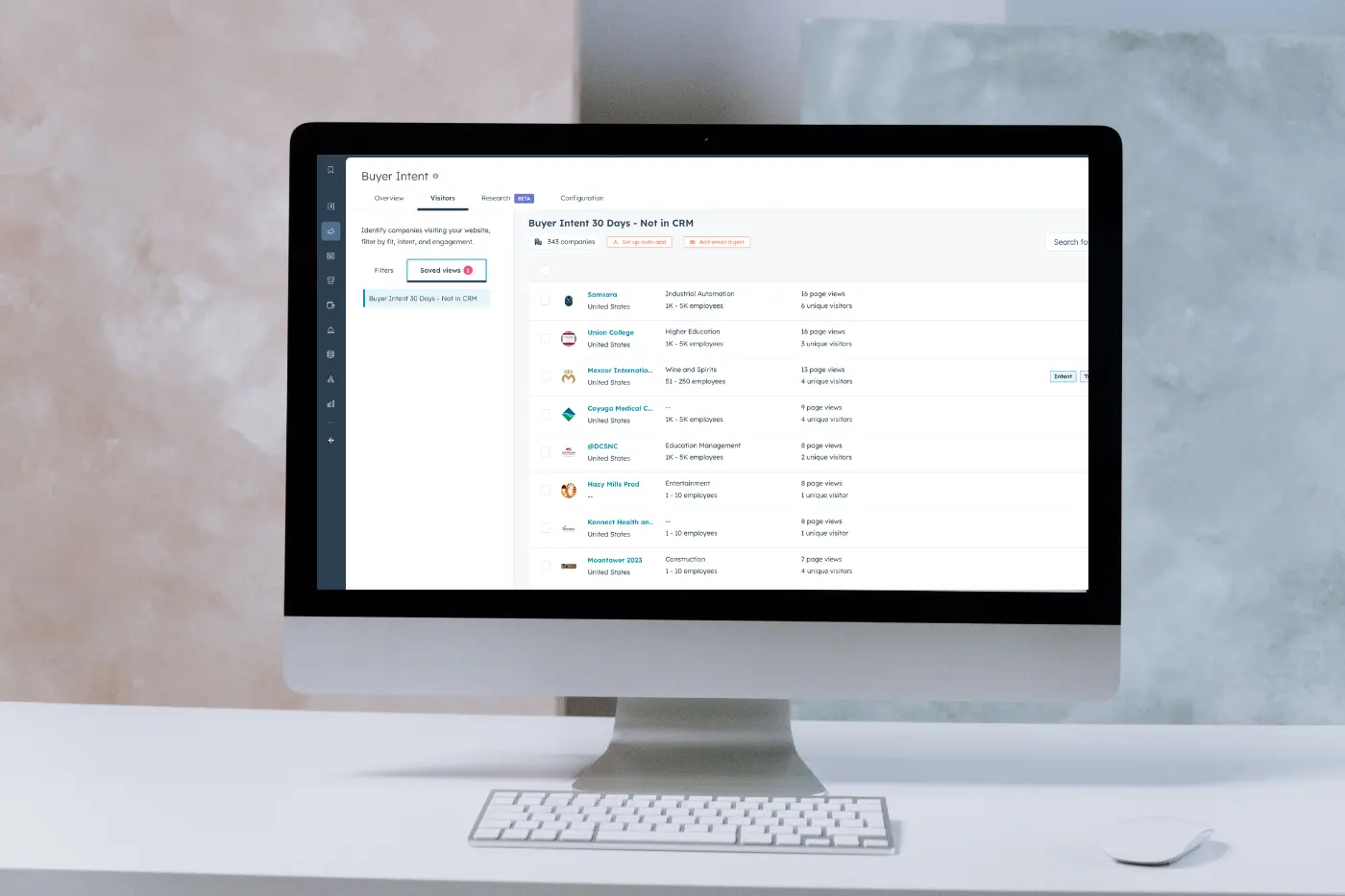Beyond the Spreadsheet – The Strategic Power of Your B2B Budget
You have to spend money to make money. Yes, it’s an old cliche, but still true. You know you have to invest in sales enablement and marketing for your B2B company… but do you know how, where, and why to spend?
Your B2B sales and marketing budget needs to be more than a list of expenses; it should be the financial blueprint for your B2B company’s growth. Too often, budgets are created in silos, leading to misaligned efforts, wasted resources, and missed revenue targets. A truly effective budget is a strategic document, born from data-driven forecasting and a unified vision for success. Let’s talk about the transformation of marketing spend from a necessary cost into a calculated investment, and how to determine what assets, tactics, and strategies deserve your dollars this year.
Why a “Strategic” Budget Matters for B2B Growth
Honestly, a strategic approach to your sales and marketing budget is non-negotiable. Otherwise, you’re just guessing. Livin’ on a prayer is fine for Bon Jovi… less fine for your B2B business.
Strategic thinking forces your company to move beyond simply allocating funds and instead focus on aligning every investment with specific, measurable business outcomes. This process ensures that your marketing strategy isn’t just generating leads, but attracting the right leads that the sales team can efficiently convert into customers. A strategic budget provides a clear roadmap, connecting daily activities to long-term revenue goals and creating a predictable engine for company growth.
A Framework for Strategic Investment: The Revenue Marketing & Sales Enablement Program
This article provides a framework for building a B2B sales and marketing budget that drives revenue and enables operational scale. We call it the Revenue Marketing & Sales Enablement program. This is meant specifically for B2B companies with at least $20 million in annual revenue. The strategies and essentials outlined here will work for all B2B businesses, regardless of size. You just need to be prepared for the investment, the time it takes to realize ROI, and make sure you have the necessary headcount to implement these strategies.
Laying the Strategic Foundation for B2B Growth
This initial phase is about deep analysis, strategic planning, and planning for the creation of some essential sales enablement and marketing assets. Taking time for these foundational components helps you build a budget based on a clear understanding of your market, your customer, and your company’s unique growth objectives. This groundwork prevents reactive and wasteful spending, setting the stage for a targeted, high-impact investment strategy.
Identify Your Ideal Target Audience and Map the Customer Journey
Who do you think you’re talking to?
Seriously, who do you think you’re talking to when you’re setting up your marketing messages? You need to know what companies need your solutions, and who inside those companies is responsible for finding solutions.
This involves creating an Ideal Customer Profile (ICP), which details the type of company that derives the most value from your product or service. Within those companies, you must identify the key buying personas—the individuals involved in the purchasing decision. Understanding their roles, pain points, and needs is critical. From there, you map their unique customer journey, tracing the path from initial awareness to final purchase.
Your buyer’s journey map should contain the prospect’s thoughts, feelings, and needs at each stage of the purchase process. It should outline the key content and enablement your sales and marketing team has (or needs to create) in order to meet each prospect where they are in the journey, and help them get to the next phase. This map becomes the guide for your entire content and channel strategy.
Define Your B2B Company’s Growth Targets and Revenue Goals
To avoid wasteful spending, tie your budget to your company’s ambitions. Leadership needs to establish clear, realistic, and attainable growth targets. These goals shouldn’t be arbitrary; they should be based on historical performance, real market opportunity, and industry benchmarks. Whether the goal is to increase market share by 10% or achieve a specific annual recurring revenue figure, these targets provide the “north star” for every budgetary decision that follows.
Building a Funnel Math Model for Growth Projection
With revenue goals defined, you can build a “funnel math model” to determine the required activity to hit them.
This involves working backward from your sales targets using historical conversion data. The central question is: how many leads does marketing need to generate for sales to close enough deals?
You can calculate this by dividing your target number of closed deals by your overall lead-to-close conversion rate. A more detailed approach uses conversion rates for each stage of the sales funnel (e.g., MQL to SQL, SQL to Opportunity). The resulting number of required leads is the primary driver that should inform the size of your sales and marketing budget. We go into a deeper dive and more detailed explanation here.
Create Your Essential Sales Enablement and Revenue Marketing Content
With a clear understanding of your audience and their journey, your marketing team can work with your sales team to create the essential content needed to support the sales process. This includes sales-ready materials like case studies, product slicks, and proposal decks that directly address customer needs at different buying stages.
A key component of this stage is ensuring your website is optimized for conversion and that a shared CRM is in place. This shared technology is vital for the sales team and marketing team to track leads, manage the pipeline, and measure the success of their collaborative efforts.
Revenue Marketing Program Implementation & Optimization
With a strategic foundation and aligned teams, you enter the implementation and optimization phase. This is where your budget is put to the test… literally. It’s a period of active experimentation, data collection, and refinement. The goal is not immediate perfection but to learn what resonates with your market and what drives the most valuable conversions.
Creating Revenue Marketing Campaigns: More Than Ads
Effective B2B marketing requires integrated, omnichannel campaigns that reach your audience across multiple touchpoints. Rather than relying on a single channel, this strategy involves a coordinated mix of content marketing, SEO, paid media, social media, and email nurturing. During this testing phase, using diverse channels is critical. It allows you to gather data on which platforms and messages best engage your ideal customer, revealing the most cost-effective paths to generating qualified leads and building a predictable pipeline.
Why Testing & Optimization Require Budget & Time
Campaign optimization is not an instant process; it requires patience and financial tolerance.
For instance, a platform like Google Ads can take up to 90 days to fully test variables and optimize ad delivery for the best opportunities. You won’t really know how effective this channel is for your business until the algorithm does its thing.
Your business must have the appetite to let campaigns run long enough to gather meaningful data before making drastic start/stop decisions. A healthy portion of your marketing budget should be allocated specifically for this learning period, understanding that initial costs per lead may be higher as both the system and your team learn and refine.
Finally: Learning & Scaling What Was Successful
After a period of rigorous testing and optimization, you will have a wealth of performance data. This final phase is about leveraging those insights to scale your growth. It involves doubling down on proven strategies, expanding your reach, and exploring more advanced tactics to cement your market position and drive sustained revenue growth.
Analyzing Campaign Performance
A deep analysis of campaign performance is the first step. Identify the messages, channels, creative assets, and website pages that generated the highest engagement and conversion rates. At the same time, analyze the quality of the leads and deals generated. Did they fit your ICP? Did they progress through the sales funnel smoothly, or did they stall? This analysis reveals what’s working and highlights gaps where new sales enablement content or lead nurturing programs will help you improve sales cycle speed and close more deals, faster.
Expanding Your Reach and Awareness With Your Ideal Audience
In the scaling phase, you’ll need to take what you learned from your tests and apply them to a broader audience. This is the time to increase your investment in the channels and campaigns that delivered the best results, and either downplay or divest from the channels or tactics that weren’t as successful.
The objective is to expand brand awareness and reach more potential customers who fit your ICP. By amplifying what works, you move from testing to predictable lead generation, building market authority, and creating a sustainable competitive advantage for your business.
Advanced Sales & Marketing Strategies
Once a foundation of predictable growth is established, your B2B company can expand into more advanced strategies. These tactics allow for even greater precision and efficiency:
- Account-Based Marketing (ABM): Treating individual high-value accounts as markets in their own right.
- Customer-Based Marketing (CBM) & Account-Based Experience (ABX): Focusing on deep engagement and personalized experiences for target accounts.
- Upsell & Cross-sell Programs: Leveraging customer success teams to expand revenue from the existing customer base, which is often more cost-effective than new customer acquisition.
Your Sales & Marketing Budget as a Blueprint for B2B Growth
A strategic sales and marketing budget is far more than a line item in your QuickBooks. It is a dynamic blueprint for sustainable B2B company growth. By building a strong foundation based on your ideal customer and revenue goals, unifying your sales and marketing teams around a shared strategy, and committing to a cycle of testing, learning, and scaling, you transform your budget from an expense line into a powerful investment engine.
Check out examples, practical applications, and get expert insights from a CEO and Director of Strategy in this on-demand webinar!
Watch “Your New Revenue Machine: Build the Perfect Sales & Marketing Budget for Growth” now.
Budgeting for B2B Revenue Marketing & Sales Enablement FAQs
This section answers some frequently asked questions about building and managing B2B sales and marketing budgets.
What is the marketing budget for a B2B company?
While the ideal budget depends on your specific goals and industry, here are some common benchmarks as a percentage of company revenue:
- All Industry Average: 7.7%
- Professional Services: 11.06%
- Banking/Finance: 11.18%
- SaaS/Tech: 9.16%
- Manufacturing: 6.67%
- Healthcare: 9.31%
What metrics should I track to evaluate the effectiveness of my sales and marketing budget allocation?
To measure success, focus on metrics that connect spending to revenue, including:
- Customer Acquisition Cost (CAC)
- Customer Lifetime Value (CLV)
- Marketing Originated Pipeline & Revenue
- Lead-to-Close Conversion Rate
- Sales Cycle Length
- Return on Investment (ROI) by campaign and channel
Which sales and marketing channels typically deliver the best ROI for B2B companies?
The best channels depend heavily on your specific industry and ideal customer profile. However, high-performing B2B channels often include organic search (SEO), targeted content marketing (blogs, whitepapers), LinkedIn (both organic and paid), and highly segmented email marketing campaigns. The key is to test and identify the unique channel mix that works for your business.
What factors impact the allocation of funds in a B2B sales and marketing budget?
Several factors influence allocation, including your company’s growth stage (startup vs. established), market competitiveness, the complexity and length of your sales cycle, and your overarching business objectives (e.g., market penetration vs. profitability).
What are the key components to include in a sales and marketing budget to drive B2B growth?
A comprehensive budget should account for all necessary tools, talent, and activities, including:
- Personnel costs (salaries, commissions)
- Technology stack (CRM, marketing automation tools)
- Content creation (website, blogs, case studies, sales slicks)
- Paid media spend (search, social, display ads)
- Sales enablement materials (proposal decks, educational articles)
- Events and sponsorships (trade shows, webinars)




